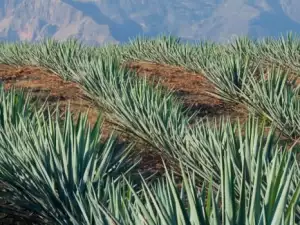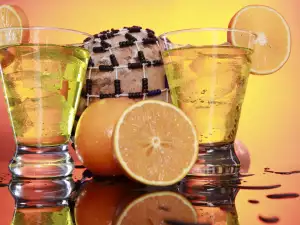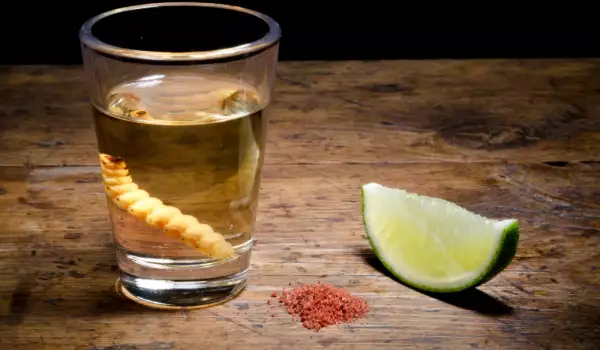Tequila is a popular spirit originating from Mexico. It is obtained through the fermentation of the juice of a plant known as blue agave. The plant in question thrives within the confines of the town of Tequila (state of Jalisco), which is why the distilled alcohol carries that name. According to local residents, the drink has been made there for more than 2 centuries. The word tequila translates as volcano.
The plant used to make the alcoholic beverage is very similar to a cactus. But experts say that agave categorically does not belong to that family. It has long leaves, sharpened at the tips, covered in thorns. Usually it can be seen at high-altitude levels that are well lit by the sun. The species of agave used to produce tequila is known as Agave tequilana Weber.
History of Tequila
As with many alcoholic beverages, tequila has a millennia-long history. It is believed that a drink similar to it was being made as early as 300 BC. In that period the Aztecs, that inhabited the areas that would one day become Mexico, managed to make juice from the Agave tequilana Weber plant. Then they used the liquid to make a special wine which they used during their ceremonies. Jump forward much later to the 1st quarter of the 16th century when those same lands were conquered by the Spanish and the locals learned how to distill alcohol. They began distilling the juice and created the initial form of tequila we know today.
Production of Tequila
The juice used to make tequila is extracted from the core of the blue agave plant. When the plant reaches 1 year of age, its branches and shoots are cut off. This allows the core of the plant to grow larger and produce more of its juice. Once the plant reaches 10 years of age, the next important stage for growers can begin - they can finally extract the juice from its core. Subsequently, this liquid is subjected to distillation. Interestingly, when an agave is ready for use it attains a brown color. To obtain the juice, the leaves are cut off once again.

This leaves only the core, which can reach a weight of up to 198 lb (90 kg) sometimes. In this "castrated form", the plant is very much akin to a pineapple. 15 lb (7 kg) of agave core yield about 4 1/5 cups (1 L) of tequila. The material taken from the agave is heat treated so that the starch is replaced by sugar.
Once boiled and cooled, the core is mashed and the juice is filtered. Thus obtained liquid is mixed with yeast, sometimes with sugar as well. About 10 days are then needed for fermentation. After, the liquid is distilled, the process occurring in 2 stages. Before bottling, the tequila is left for awhile in wooden vats. This does not usually continue longer than 3 years.
Types of Tequila
There are 2 main types of tequila - one made solely from blue agave and another where other ingredients are used in addition. Stores offer golden tequila, silver tequila, aged tequila and super aged tequila. Silver tequila is distinguished by the fact that it is bottled almost immediately after distillation takes place.
Another characteristic is transparency. So-called golden tequila is obtained after caramel or other colorant is added to the transparent type. Sometimes this golden color is owed to aging, not additional coloring. Aged tequila is among the preferred types. It is aged up to 1 year in oak barrels. But the most exquisite type is hands-down super aged tequila, which is stored in oak vats from 1-10 years.

Serving Tequila
Tequila is poured into specialized narrow glasses, known under the name caballito. A tequila must neither be too cool, nor too warm. Salt and lemon slices are often used when consuming the drink but they are not mandatory. The traditional rule is to rub the area between the thumb and index finger with a lemon, then sprinkle it with salt. Next, lick it and down a tequila shot in one gulp. Finally, you can eat an entire lemon slice after.
Drinking Tequila
Tequila finds wide application in cocktail making. It is combined with lemon juice or lime juice. It can be mixed with tomato juice or orange juice, as well as nonalcoholic drinks like tonic. Sometimes they put whole chili peppers in the drink, making its effects even more explosive. Some enthusiasts of this Mexican alcohol boldly add it to their warm coffee or tea. Others prefer to mix it with gin, cognac, whiskey or vodka. Tequila manages to find a spot in cooking as well. It is used to marinate pork, veal and chicken meat.
Benefits of Tequila
As we know, tequila is consumed chiefly for its alcoholic properties. But scientists believe that it is something more than a quick way to relax. It also turns out that the Mexican drink has a positive effect on our health. This is due to the juice from blue agave that is contained in tequila. Agave has the ability to treat inflammation and soothe. It is said to help with stomach problems. According to researchers, the blue agave substance found in tequila helps get rid of excess pounds.





















